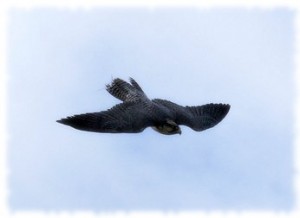This is a translation and annotation of the poem 畫鷹 (Huà Yīng) by the Tang dynasty poet 杜甫 (Dù Fǔ). The translation aims to be literal and close to the original, not idiomatic.
This poem describes the creation of a painting, and moves on to the existence of the hawk pictured within it. Du Fu often wrote about paintings, and these poems involve an interesting layering of creativity: nature’s work is depicted by the painter, whose own work is then depicted by the poem.
 畫鷹
畫鷹
Huà Yīng
素練風霜起,
sū liàn fēng shuāng qǐ
[plain] [silk] [wind] [frost] [arise]
On plain silk, the wind and frost arise
_Here a blank canvas is being painted; 'wind and frost' describes the essential strokes forming the image._
蒼鷹畫作殊。
cāng yīng huà zuò shū
[dark blue] [falcon] [paint] [make] [detail]
A dark blue falcon, painted in detail
_The first couplet concerns the creation of the painting._
㧐身思狡兔,
sǒng shēn sī jiǎo tù
[perk up] [body] [think] [clever] [rabbit]
It perks its body, considering a wily rabbit
_Now the falcon in the painting has become more real and is contemplating how to hunt._
側目似愁胡。
cè mù sì chóu hú
[side] [eye] [seem] [angry] [barbarian]
At each side its eyes seem angry like a barbarian's
_The Tang had frequent contact with foreigners, whose blue eyes seemed very alien. In the second couplet, the falcon gains some existence beyond the painting._
絛鏃光堪摘,
tāo xuàn guāng kān zhāi
[tie] [ring] [light] [worthy] [pick up]
The tethering ring shines, worthy of picking up
_Now the painting is almost vivid enough to touch, yet this realism is focused in the tethering ring which still restricts the falcon._ _The fifth couplet is a turning point (轉) in the poem._
軒楹勢可呼。
xuān yíng shì kě hū
[high] [pillar] [potential] [can] [call]
From the high pillar, its potential may be called upon
_The third couplet builds the tension of this dangerous animal trapped inside the painting._
何當擊凡鳥,
hé dāng jī fán niǎo
[what] [should] [attack] [common] [bird]
Why should it attack a common bird?
_This may be a political reference to the abuse of power inflicted on the masses, although this doesn't seem to appear elsewhere in the poem._
毛血洒平蕪。
máo xuè sǎ píng wú
[feather] [blood] [scatter] [flat] [grass]
Feathers and blood are scattered on the level grass
_
Note that 平 also means 'peace', which has no been splattered with gore. There are many characters Du Fu could have chosen for 'grass', yet he chose 蕪, which contains 無. This may bring the poem back to the emptiness of its beginning.
_
畫鷹 considers what it is to be created, to be controlled and to exist. Here, what is created comes from simple beginnings, and at first is beautiful, yet its desire to exist for itself results in the purity of its origins being ruined. Another interpretation may be that excessive control and oppression lead to violent ends.
 畫鷹
畫鷹